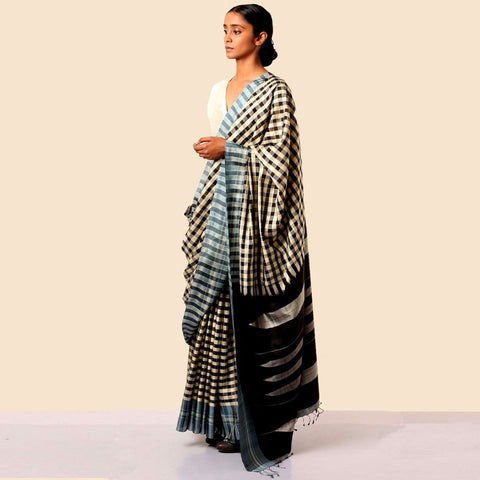The Ilkal and Khun Weaving Technique from Karnataka

Over two decades ago, when I first came to Bengaluru, I caught my first glimpses of the ilkal sari. It seemed to be everywhere, worn by slender, straight-backed women, most often seen at construction sites. I did not know much about the weave, but was struck by the grace and elegance with which the saris were worn— always, with impeccably tailored khun blouses. They became, for me, an iconic part of the human elements of the cityscape.

The fine checks, the sheen of the distinctive red pallu with its white temple designs and the defining borders made a very strong impression. Speaking with some of Bengaluru’s textile connoisseurs, I learned that these were saris worn essentially by the rural women of north Karnataka, and parts of adjoining Maharashtra, a distinctive part of their identity. It took me a while to track them down at handloom exhibitions held in the city. Over the years, these once easily available handloom saris were imperceptibly replaced by saris woven on power looms, until the former were almost impossible to track down.


Little did I know that the women I saw in the city, wearing these beautiful saris, were part of the story of the handloom sari. They were, of course, migrant labour, forced to leave their fields, looms and homes in search of a living, in turn feeding the disappearance of the handloom sari. A sad fate, for one of the most distinctive saris, a part of the textile heritage of Karnataka. On one occasion, at an exhibition of handlooms from the state, I was berated by an angry weaver from Ilkal—the sponsors had failed to advertise the event well, and there were no customers for the saris—I was, quite literally, the only buyer that day. “We don’t need city folk like you”, he told me angrily, “our rural sisters support and respect us. They always buy the saris we weave.” He was pacified when I explained my genuine interest, and spent time explaining the weave. I took a small stack of beautiful silk-cotton saris home. Later, I saw the ilkal sari becoming more and more visible, even fashionable. By which time, most of the handlooms had been replaced.
Author: Kaveri Ponappa


Leave a comment